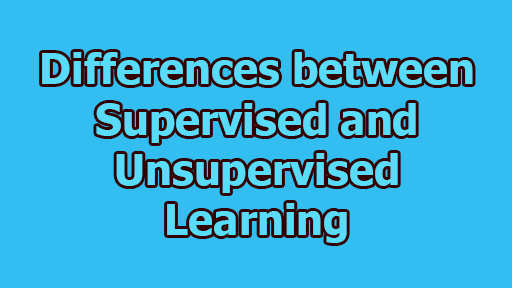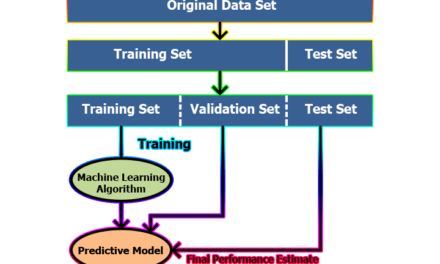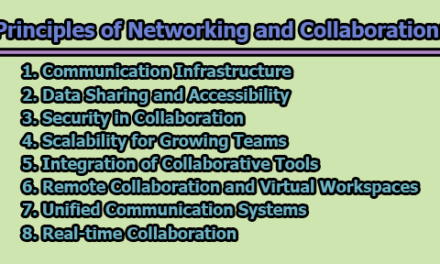Differences between Supervised and Unsupervised Learning:
Machine learning is a subfield of artificial intelligence that enables computers to learn from data and make predictions or decisions without being explicitly programmed. Two fundamental categories of machine learning algorithms are supervised learning and unsupervised learning. These approaches serve distinct purposes and have different characteristics, making them essential tools in various applications. Here, some of the differences between supervised and unsupervised learning are being:
| Aspect | Supervised Learning | Unsupervised Learning |
| Data Requirement | Requires labeled training data where each input is paired with a corresponding output or target. | Works with unlabeled data, meaning it does not rely on explicit output labels. |
| Objective | Predicts or classifies data points based on known associations. | Discovers inherent patterns or structures within data without predefined categories. |
| Data Representation | Involves both input features and target labels, making it a supervised task. | Focuses on input features only, as it lacks predefined target labels. |
| Learning Process | Models learn to map input data to known output labels during training. | Models aim to uncover hidden patterns or relationships within data. |
| Training Phase | Requires a supervised training phase where the model adjusts its parameters based on label-associated errors. | Does not require explicit training based on known labels. |
| Common Algorithms | Common supervised learning algorithms include linear regression, logistic regression, decision trees, and neural networks. | Common unsupervised learning techniques include clustering (e.g., K-means), dimensionality reduction (e.g., PCA), and density estimation (e.g., Gaussian Mixture Models). |
| Evaluation | The model’s performance is assessed using metrics such as accuracy, precision, and recall on a test dataset. | Evaluation can be less straightforward, often involving metrics like silhouette score for clustering or explained variance for dimensionality reduction. |
| Generalization Capability | Aimed at making accurate predictions or classifications on new, unseen data based on learned patterns. | Focuses on discovering underlying structures in data, which may not always lead to direct predictions. |
| Common Applications | Well-suited for tasks where there are known outcomes, such as image classification, speech recognition, and sentiment analysis. | Used for exploring data, customer segmentation, anomaly detection, topic modeling, and dimensionality reduction. |
| Human Guidance | Requires human-provided labels or annotations to train the model effectively. | Typically requires minimal human guidance since it focuses on data patterns and structures. |
| Use Cases | Ideal for tasks with clear objectives and predefined categories, where supervised learning can make precise predictions. | Applied in scenarios where the data’s underlying structure needs to be uncovered, often used for exploratory data analysis. |
| Supervision Level | Involves a high level of supervision, as models rely on labeled examples for training. | Works with low to no supervision, as the algorithms autonomously identify patterns. |
| Data Availability | Dependent on the availability of labeled datasets, which can sometimes be scarce and expensive to create. | More versatile as it can work with unlabeled data, which is often more abundant and readily available. |
| Algorithm Complexity | Supervised learning algorithms can be complex, especially in the case of deep neural networks. | Algorithm complexity varies, with some techniques like K-means being relatively simple, while others like hierarchical clustering can be complex. |
| Output Interpretation | Predictions made by supervised learning models are directly interpretable since they relate to known labels or categories. | Interpretation of unsupervised learning results may require domain knowledge and a deeper understanding of the data’s characteristics. |
Supervised learning and unsupervised learning are two essential paradigms in machine learning, each with its unique characteristics and applications. Supervised learning relies on labeled data to make predictions or classifications, while unsupervised learning seeks to uncover patterns and relationships in unlabeled data. Both approaches play crucial roles in solving real-world problems, with supervised learning being more focused on predictive tasks and unsupervised learning being valuable for data exploration and pattern discovery. Understanding the differences between these two paradigms is fundamental for selecting the appropriate machine-learning approach for a given problem and leveraging their capabilities effectively.

Library Lecturer at Nurul Amin Degree College










